Want to see the creepiest attraction in Paris? By the middle of the 18th century, Paris stunk. It may have been one of the largest and most prosperous cities in the Western World. Its own rapid growth caused the city’s cemeteries to literally overflow with the bodies of the dead.
The reek of decomposing flesh attained epidemic proportions in certain areas of the city. The area around the main food market of Les Halles suffered the most.
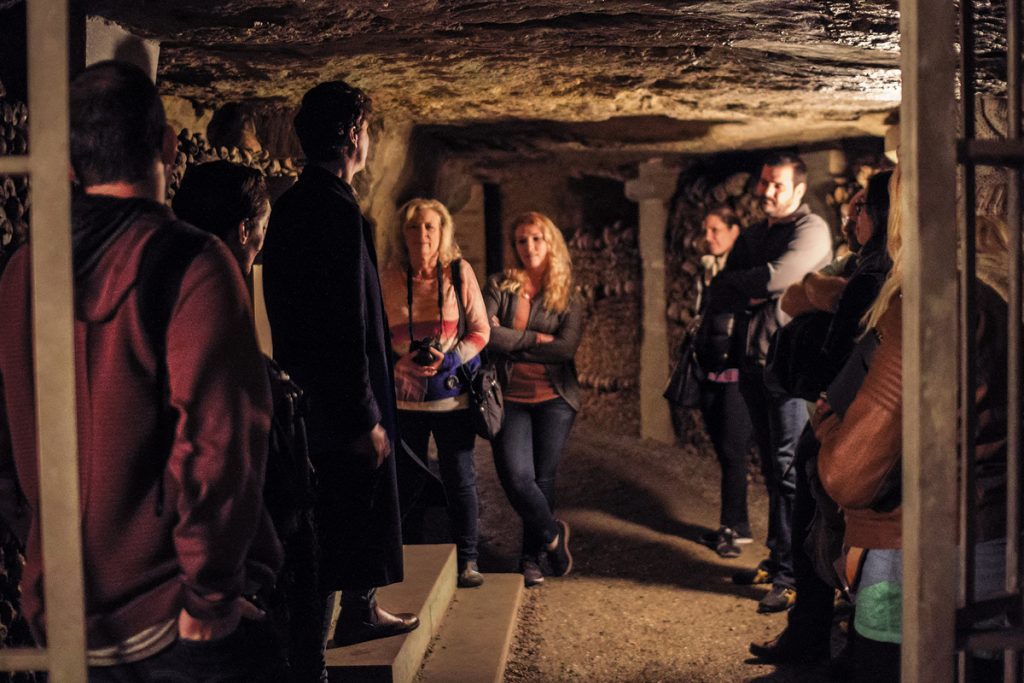
Public health was at risk, so something had to be done. Few expected that the solution would create one of the most singular and spooky tourist attractions in the world. This was an incredible feat of architectural derring-do, marketing genius, and downright hard, nasty work. This transformation turned the city from a stinking, pestilent warren of medieval chaos into one of the most beautiful and progressive cities in Europe.
Thus, it’s a story of progress, of foresight, and a bit of macabre interior design. It’s the story of the Paris Catacombs, which you can see for yourself on our Catacombs of Paris Tour. A local historian will lead you through one of Europe’s largest catacombs. You’ll see macabre arrangements of bones and learn about the history of this enormous burial ground. Be prepared for an experience like no other.
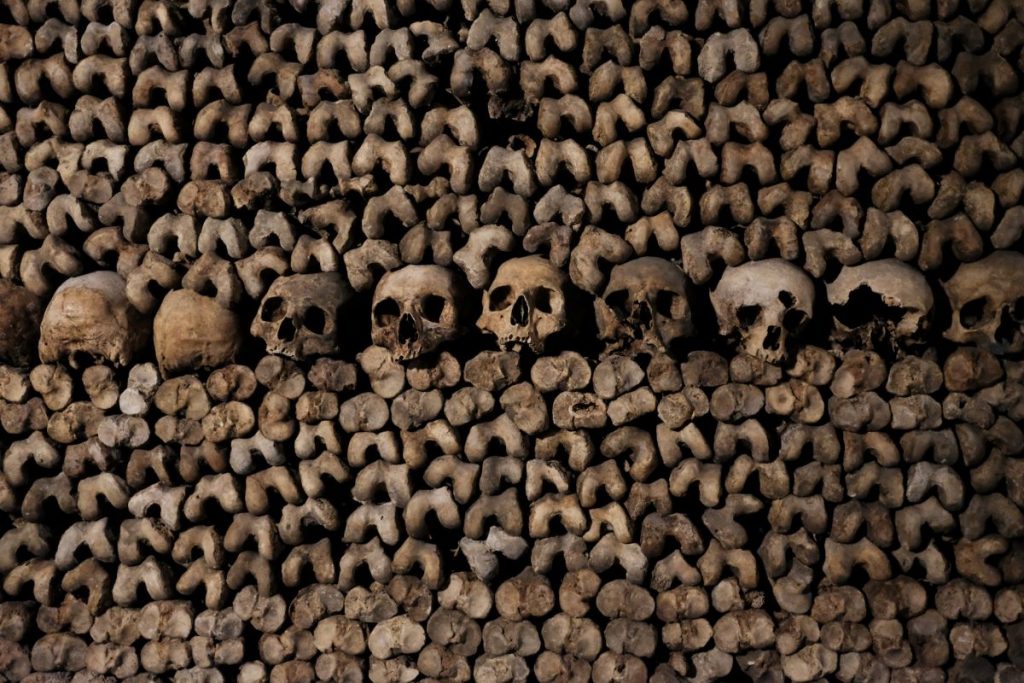
Do you have what it takes to walk around the eerie Paris Catacombs? Photo credit: Chelms Varthoumlien
Paris had a BIG problem with its dead
The cemetery of the Innocents – the largest and most important within Paris’s city limits – contained some 2 million bodies. Including the rest of the city cemeteries, about 6 million sets of remains needed to be disinterred and reburied elsewhere for the greater public good.
Because of the religious nature of the original burials, they could not simply dig up and scatter the remains. They would have to re-bury them with some form of ritual. This would be one of the largest transmissions of human remains in history.
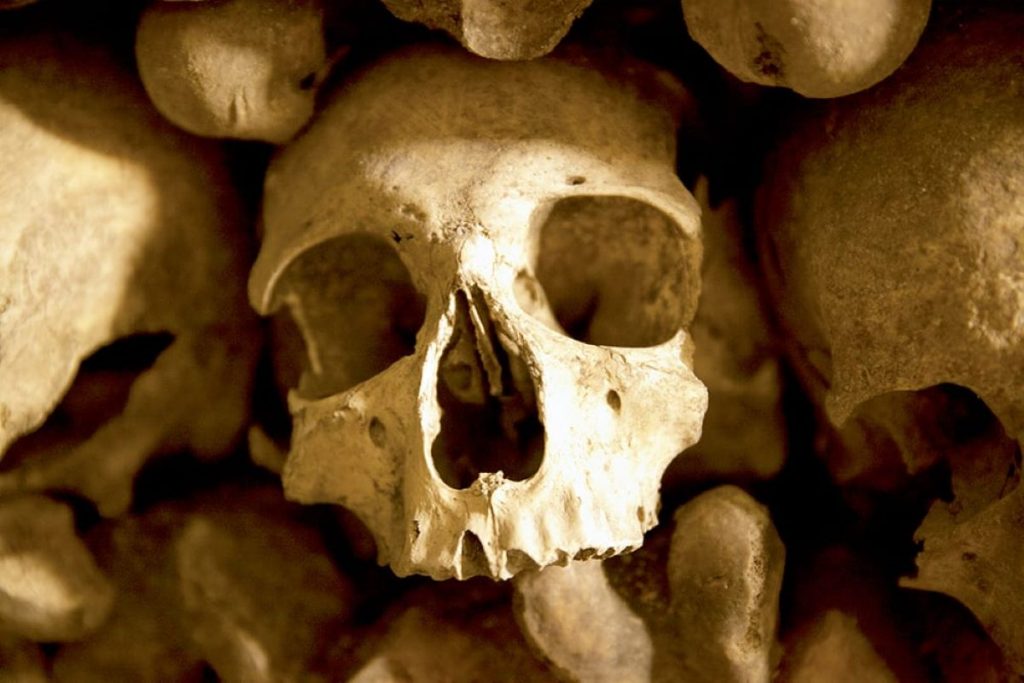
Did you know any of these facts?
How did stones for the living provide space for the dead?
The Paris Catacombs project got lucky. The city sat directly above some 200 miles of limestone tunnels carved out to provide the very stones from which the city was built. The tunnels were so extensive that by the 19th century the weight of the city created giant sinkholes into which entire buildings and blocks were collapsing.
In 1777, King’s architect Charles-Axel Guillaumot got the unenviable task of stabilizing the entire system of subterranean mine shafts to save the city from collapse. No pressure, then. Guillaumot pulled it off without much fuss.
By 1785, the tunnels were stable and the remains of dead Parisians were being dug up every night and transferred into them. A priest accompanied every wagonload of remains and chanted the Catholic “Office of the Dead” prayer cycle to ensure the remains remained at peace.
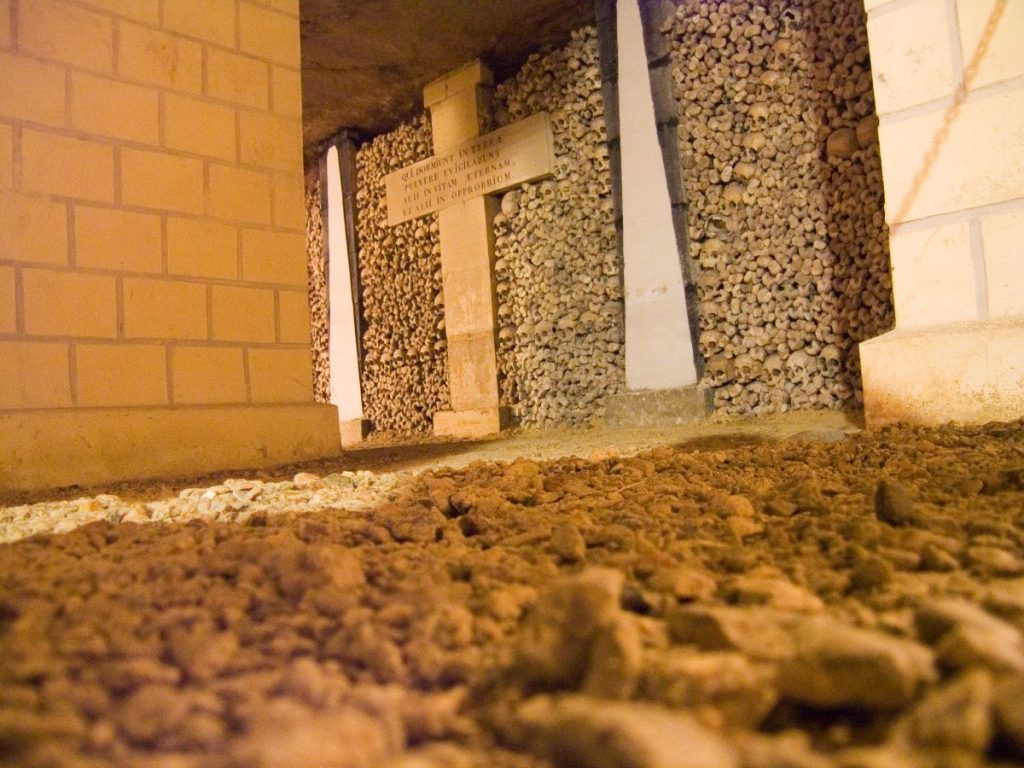
Walk around this museum and find surprises around every corner. Photo credit: jessica mullen
How did the Catacombs become a popular tourist attraction?
It took two years of nightly work to empty the majority of Paris’s cemeteries and relocate the remains in the catacombs. The transfer of bones continued up until 1859. Above ground, public works went on hold for a few years while France had a revolution, executed a lot of people, and then slowly started to rebuild.
When Napoleon marched to power on the back of the French Revolution, he inherited a medieval city in the throes of rapid modernization. One of the Little Emperor’s key beliefs was that “men are only great through the monuments they leave behind them.” He punctuated his reign with a number of grandiose public works and pieces of art (some of which can be seen at the Louvre). Many of these helped give rise to the concept of the “Napoleon complex.”
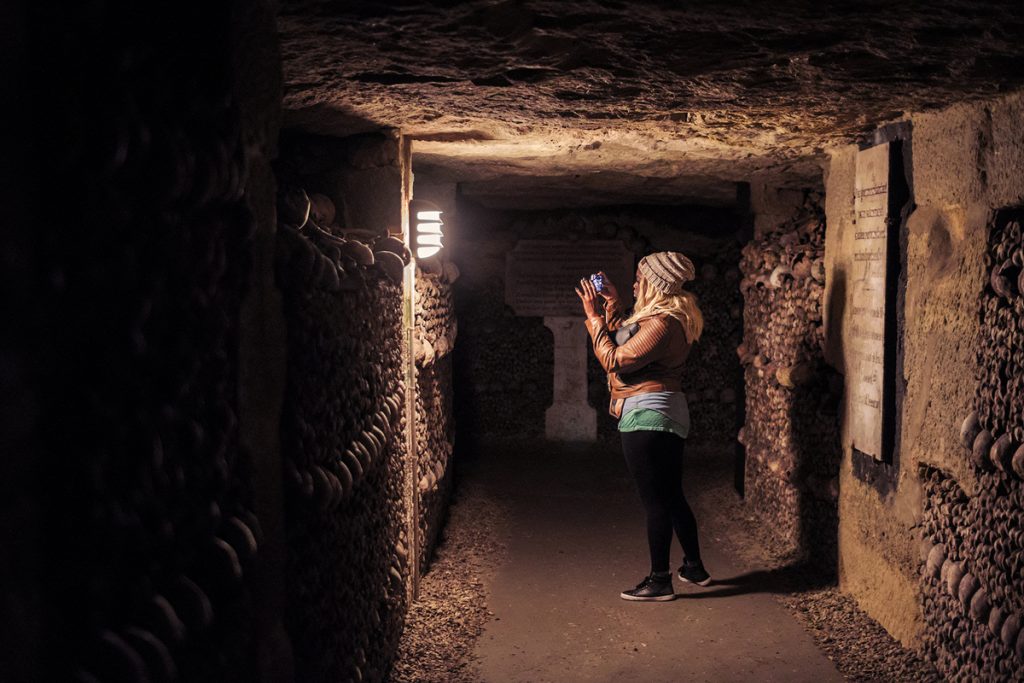
Rome, considered the preeminent monumental city in Europe, already had its vaunted system of Catacombs that intrepid tourists could visit. Napoleon decided that France needed something similar.
He commissioned his Prefect of the Seine, Nicolas Frochot, and the Inspector-General of the quarries, Louis-Étienne Héricart de Thury, to turn the quarry tunnels from a labyrinthine charnel house into something that people would want to go down and see, thus giving rise to the original Paris Catacombs tours.
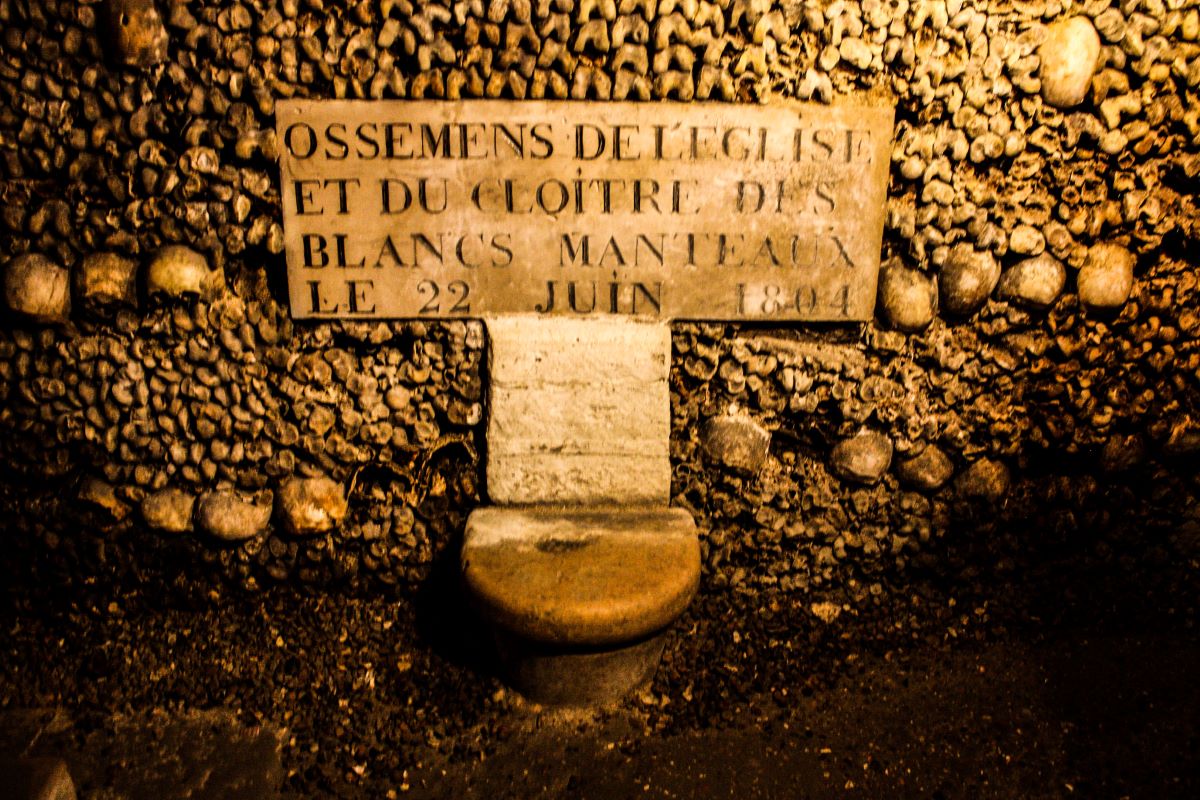
Plaques found throughout the Catacombs feature poetic and religious texts. Photo credit: Shadowgate
Why were the bones at the Catacombs arranged like that?
Quarrymen created the bone decorations specifically to attract tourists, and the effort succeeded. Under the direction of Héricart de Thury, they began arranging the transferred bones into ossuary designs. Despite the rituals that accompanied the transfers, workers had simply dumped the bones into the tunnels in large heaps.
Slowly but surely, the quarrymen lined the walls with tibias and femurs, punctuating them with skulls. These arrangements formed the basis of most of the decorations that tourists see today. Out of whimsy and to convey deeper religious messages about death, the workers also shaped bones into hearts, circles, and death heads.
They carved arrows into the ceilings so the first visitors, who explored by the eerie flicker of candlelight, would not lose their way.
Still, in 1903, a group of 25 English tourists got lost. They eventually all made it out safely. With these changes—and a clever marketing brochure that Héricart de Thury published in 1810. The Paris Catacombs soon earned a reputation as one of the most affecting and macabre places to visit in the city.
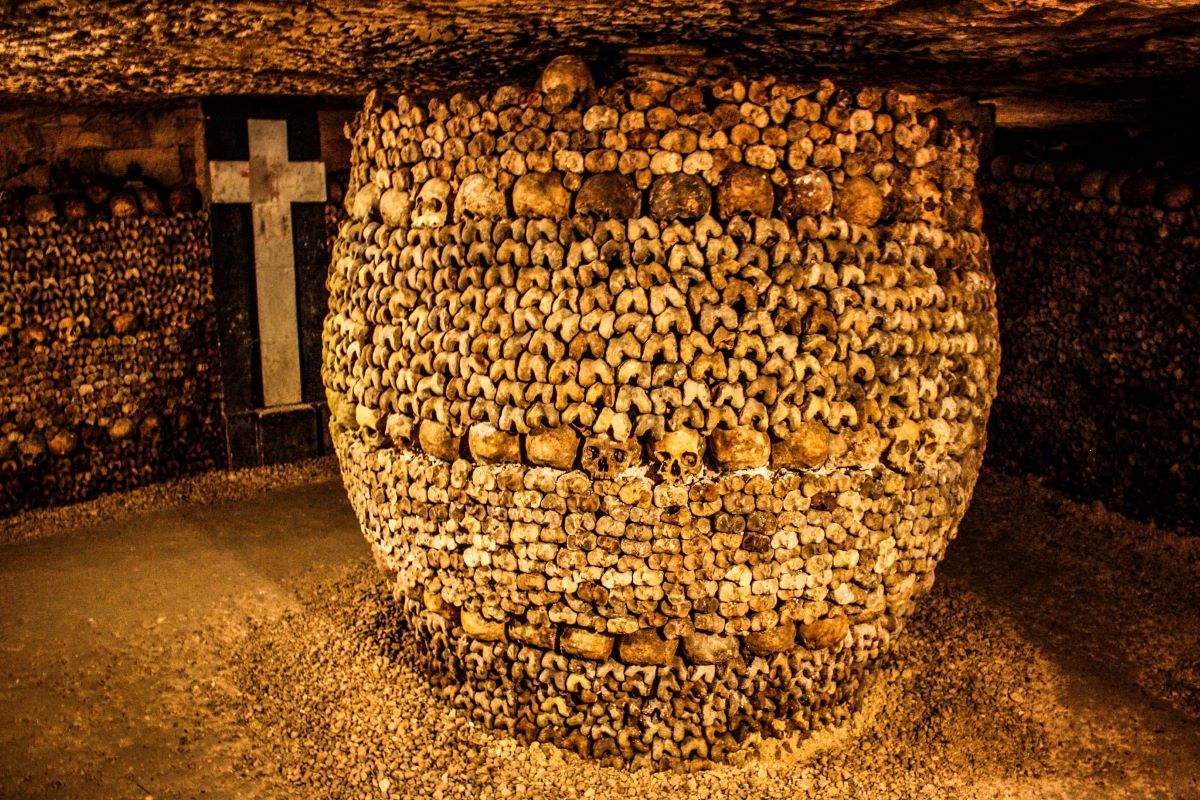
Make your way through small passageways to reach the Crypt of Passions. Photo credit: Shadowgate
Were parties ever organized at the Catacombs?
Occasionally the Paris Catacombs hosted parties. Not legal ones, mind you. There is a persistent rumor that the Comte d’Artois, who later ruled France briefly as Charles X, used to hold clandestine parties in the Catacombs.
It’s hard to verify the truth of that claim. On April 2, 1897, a group of amateur musicians staged an impromptu, and highly illegal, concert in the Catacombs late at night for about 100 people. The program included Chopin’s Funeral March and Camille Saint-Saens’s Danse Macabre.
One problem caused by the influx of visitors, both legal and illegal, was that skulls began to mysteriously vanish from their alcoves. Initially, quarry workers replaced them with new skulls but they eventually stopped. Today, every time you see a gap in a line of skulls, remember that someone probably took that one home with them as a souvenir.
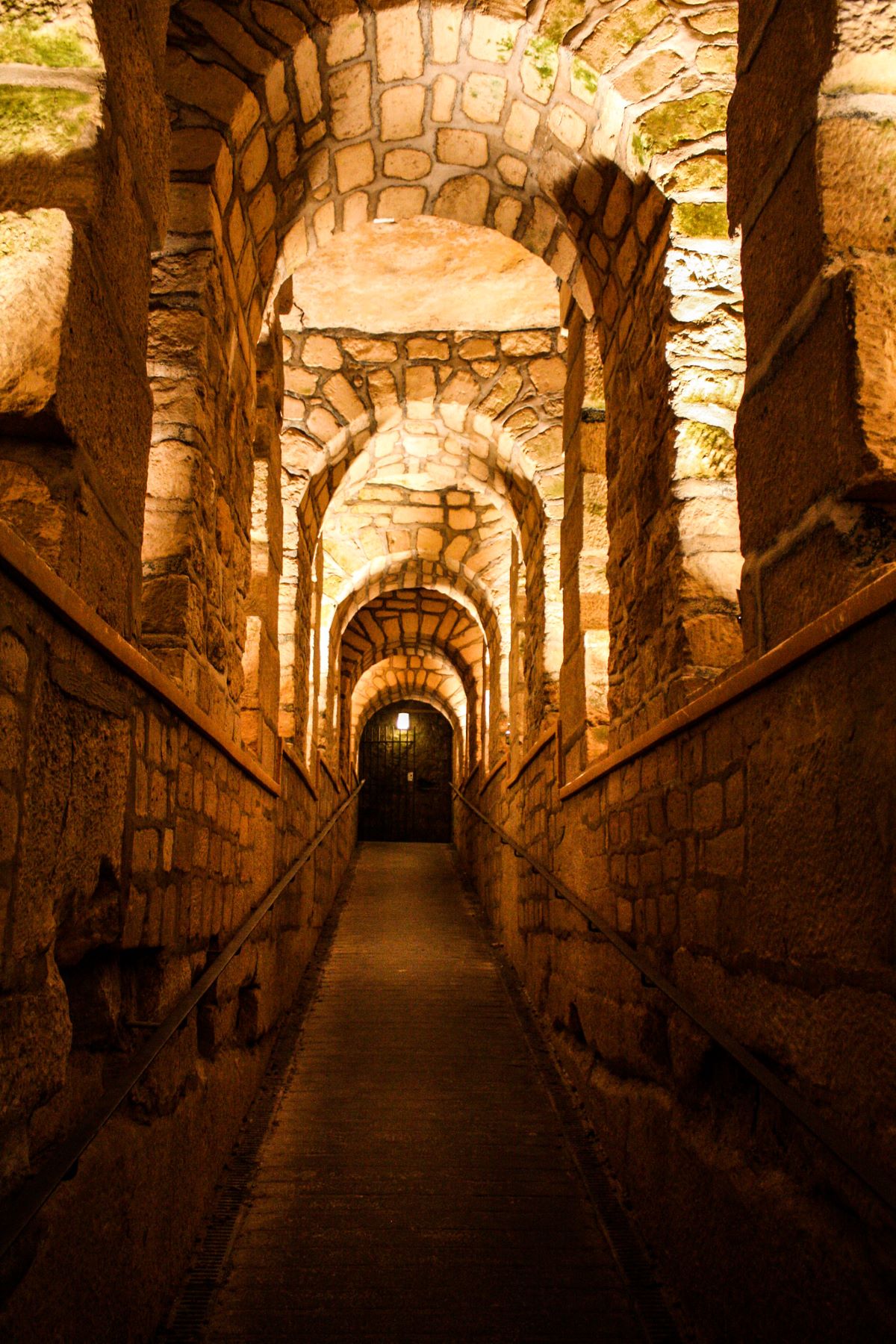
Come on in and discover the secrets of the Paris Catacombs. Photo credit: Shadowgate
What could you do and see at the Catacombs?
It’s not just bones decorating the Paris Catacombs. To entice more visitors, various “exhibitions” were installed in the Catacombs. These included a room showcasing skeletons with various deformities as well as a room displaying the types of minerals that were found when the tunnels were being excavated – neither of which you can see anymore.
Goldfish were brought in and dropped into a little pool called the Samaritan Fountain. The fountain, which collects ground water, is still a feature of the Catacombs. The fish are long dead – turns out goldfish don’t exactly thrive underground.

Walk around this museum and find surprises around every corner.
The most enduring of the Paris’s Catacombs exhibits are a series of stone carvings. They were created by a slightly mysterious figure called Decuré. He was a veteran of the French army. He spent some time in Minorca when the French annexed the island from the British.
When not helping his fellow quarrymen stabilize the tunnels, he carved faithful renderings of the Citadel of Mahon as well as other important buildings from that island. They are incongruous, unexpected, and not really connected to anything, but fascinating nonetheless. Decuré died when a rock fall crushed him while he was working in the Catacombs – no one knows where he was buried.
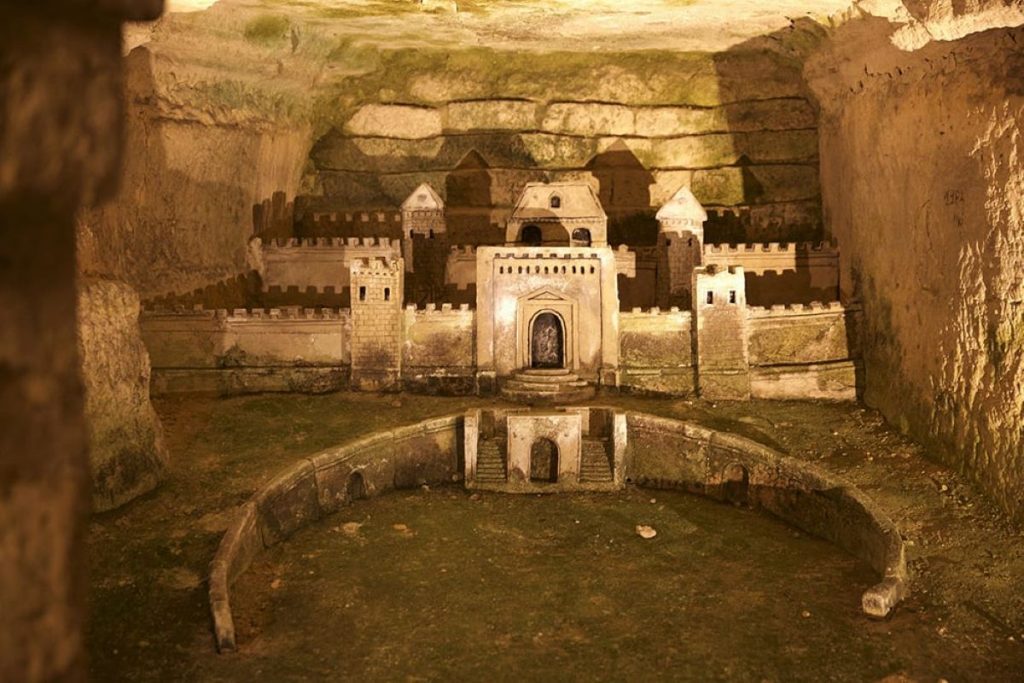
In the Catacombs you’ll find more than just bones.
FAQ’s – Paris Catacombs
How many people are buried in the Paris Catacombs?
The Paris Catacombs hold the remains of approximately six million people. City workers transferred most of them from overflowing cemeteries between the late 18th and mid-19th centuries. The Cemetery of the Innocents alone contributed around two million bodies.
Are the Paris Catacombs safe to visit today?
Yes, officials have carefully reinforced and stabilized the sections of the Paris Catacombs that are open to the public. Visitors can safely walk through the designated pathways, while authorities restrict access to much of the underground network because of its size and structural risks.
How long does a visit to the Catacombs take?
Most visitors complete a tour of the Catacombs in about 45 minutes to an hour. They walk along a route of roughly 1.5 kilometers (just under a mile) and descend more than 100 steps underground.
Why are the bones arranged in artistic patterns?
Quarry workers arranged the skulls and bones into walls, crosses, and decorative shapes to turn the Catacombs from a simple ossuary into a unique attraction. Guided by Louis-Étienne Héricart de Thury in the early 19th century, they created these designs to attract visitors and give the space a solemn yet memorable atmosphere.
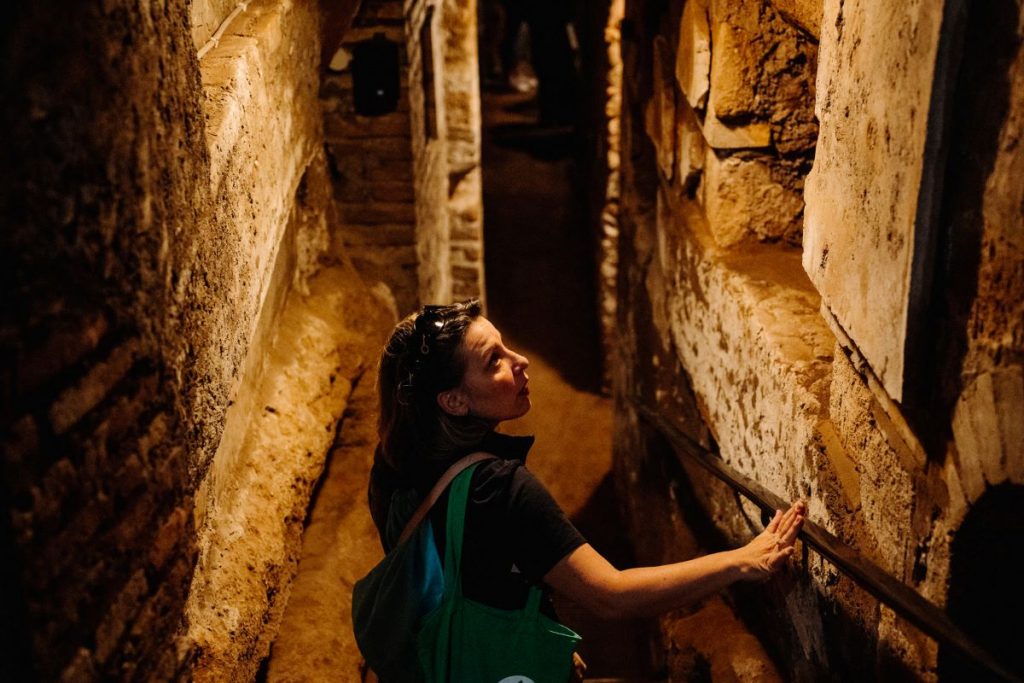
Want more juicy secrets about the Paris Catacombs? Join us on our Skip-the-Line Paris Catacombs Tour with Special Access as a local historian guides you through Europe’s largest catacombs! We’ll take you to special rooms that the general public doesn’t have access to.



